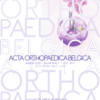Functional and radiological outcome after forearm plating in children and adolescent fracture
forearm ; overgrowth ; plate ; children and adolescent
Published online: Jun 15 2021
Abstract
The literature on forearm overgrowth after plating in traumatic conditions is relatively poor though this technique can be useful when intra-medullary nailing is not sufficient in pediatric cases. The goal of this study was to assess a potential overgrowth after plating and identify impact on function.
We conducted a retrospective study of all pediatric patients who underwent open surgery of the radius and/or ulna diaphysis with internal fixation by plating, in our institution, between October 2013 and July 2019. At last follow-up, functional and radiological outcomes were compared between the operated and uninjured forearm. Range of motion (ROM) of the wrist and elbow, clinical scores, radial and ulnar length were measured. A positive bone length discrepancy of more than 2mm was considered as an overgrowth. Were also studied the radio-ulnar index, radial inclination and radiocarpal angle.
Thirteen patients were included. The mean age was 12.1 years old (±3.0 years), they were plated on the radius (10 cases) or on the ulna (3 cases). Mean follow- up was 4.4 years (± 1.8). In two cases, the plated bone (radius) was significantly longer than the uninjured one. There was no significant difference regarding radio-ulnar index, radial inclination and radiocarpal angle. The only statistically significant difference between the operated and uninjured forearm was the pronation/supination range, which was greater in the uninjured forearm (mean 160 ±48° versus 175 ±49°, p=0.01).
This study confirms the good functional and radiological outcomes after plating even in a skeletally immature forearm.
Level of evidence : IV.
